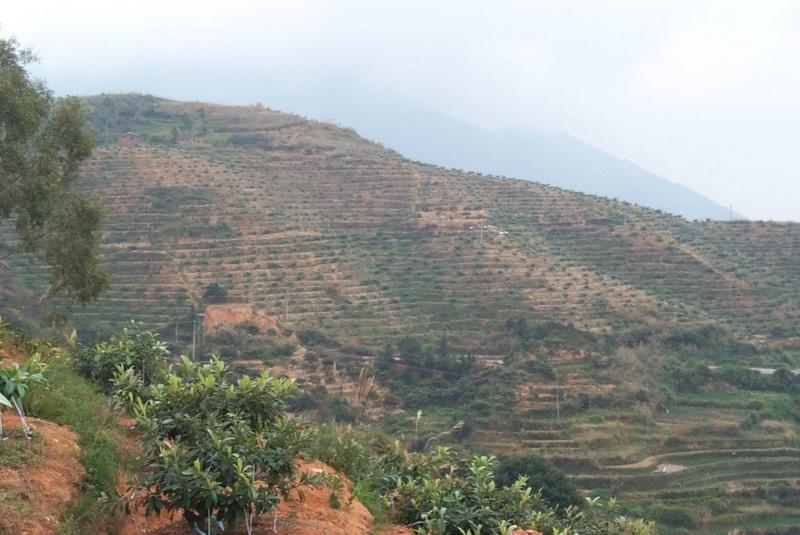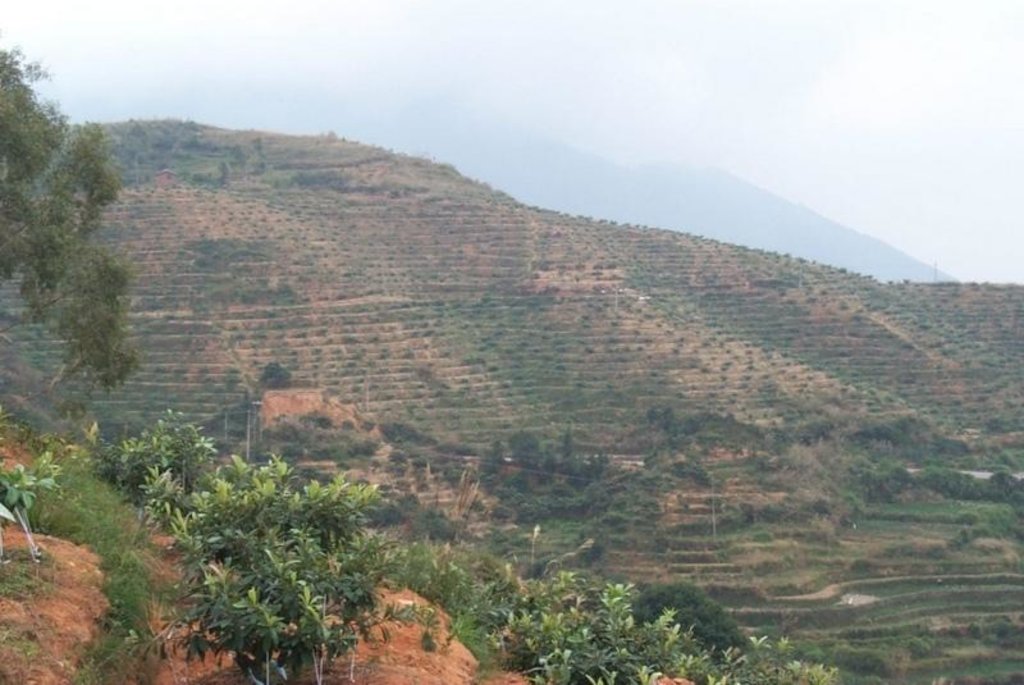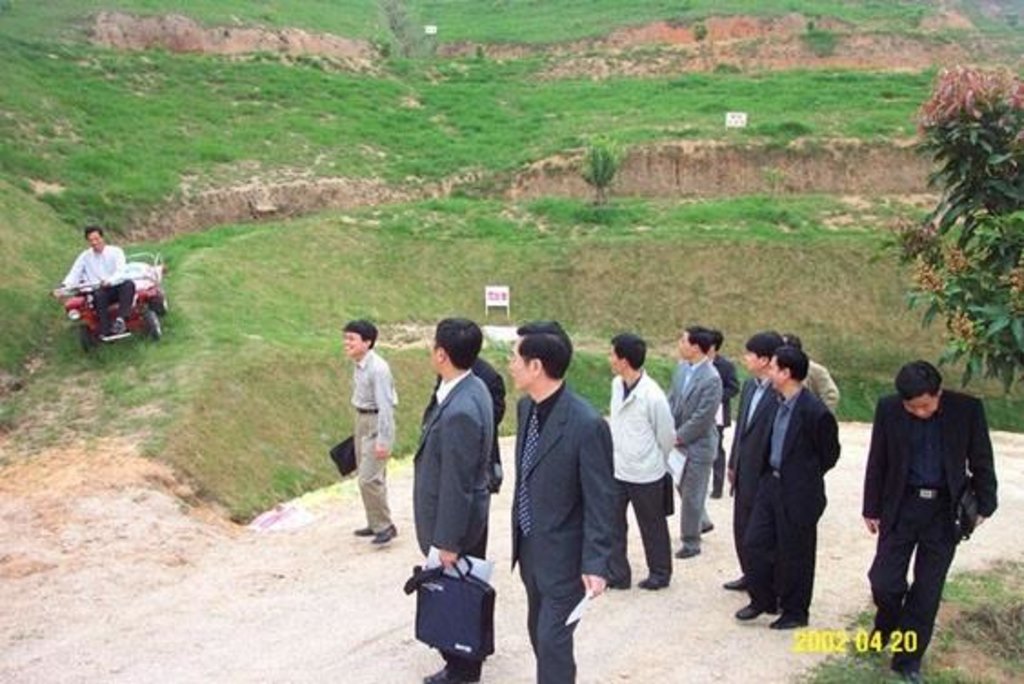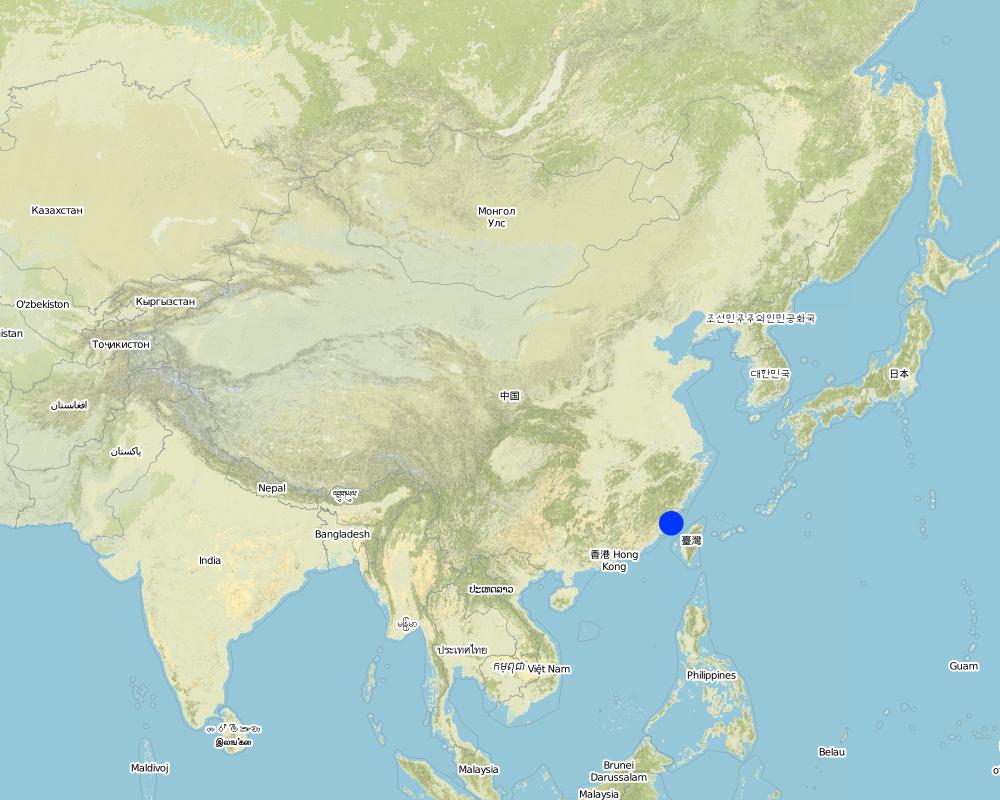Orchard Rehabilitation [中国]
- 创建:
- 更新:
- 编制者: Unknown User
- 编辑者: –
- 审查者: David Streiff, Alexandra Gavilano
Longan Rehabilitation
technologies_981 - 中国
查看章节
全部展开 全部收起1. 一般信息
1.3 关于使用通过WOCAT记录的数据的条件
编制者和关键资源人员接受有关使用通过WOCAT记录数据的条件。:
是
1.5 参考关于SLM方法(使用WOCAT记录的SLM方法)的调查问卷
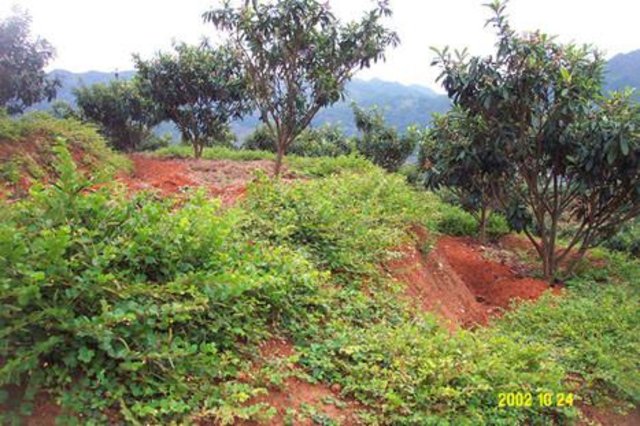
Front Bank, Back Ditch on Contour Terraces [中国]
Using contour principle, constructing terraces with the front bank and back ditch in order to control soil & water erosion.
- 编制者: Unknown User
2. SLM技术的说明
2.1 技术简介
技术定义:
Contour terrace protection with front bank and three ditches in orchard rehabilitation.
2.2 技术的详细说明
说明:
There is sufficient rainfall in this area and runoff often destroys the existing terraces causing much cost for maintaining. Sluice system on the terraces is important. This technology of the contour terrace protection is to build front bank and three ditches on terraces in order to solve this problem. The method is that building front bank on a terrace edge and digging a ditch on the back terrace as well as digging a ditch upright the terrace along a relatively low rill to induct overflow out.
2.3 技术照片
2.5 已应用该技术的、本评估所涵盖的国家/地区/地点
国家:
中国
区域/州/省:
Fujian
具体说明该技术的分布:
- 均匀地分布在一个区域
如果技术均匀分布在一个区域,则指定覆盖的区域(单位为平方千米):
2.0
如果不知道精确的区域,请注明大致覆盖的区域:
- 1-10 平方千米
注释:
Total area covered by the SLM Technology is 2 km2.
This is a experimental and demonstrating area for applying the "Three Ditches on Terrace" technology.
Map
×2.6 实施日期
如果不知道确切的年份,请说明大概的日期:
- 50多年前(传统)
2.7 技术介绍
详细说明该技术是如何引入的:
- 通过项目/外部干预
注释(项目类型等):
Experiences from the farmers' over years practice.
3. SLM技术的分类
3.2 应用该技术的当前土地利用类型

农田
- 一年一作
- 多年一作(非木材)
- 乔木与灌木的种植
年作 - 具体指明作物:
- 油料作物 - 花生
- 根/块茎作物 - 红薯、山药、芋头/椰子,其他
- rice
乔木和灌木种植 - 指定作物:
- 水果、其他
每年的生长季节数:
- 2
具体说明:
Longest growing period in days: 365Longest growing period from month to month: Jan - Dec
注释:
Main crops: perennial fruit trees. Rice-peanut-sweat potato etc.
Major land use problems (compiler’s opinion): Lack of scientific planning, irrational development of the hilly and mountain areas causing serious soil loss and land degradation as well as yield decrease.
Major land use problems (land users’ perception): Low yield and much more input (fertilizer, pesticides etc.) needed to obtain the same production.
3.4 供水
该技术所应用土地的供水:
- 混合雨水灌溉
注释:
Water supply also rainfed
3.5 该技术所属的SLM组
- 横坡措施
3.6 包含该技术的可持续土地管理措施

植物措施
- V1:乔木和灌木覆盖层
注释:
Type of agronomic measures: mulching, contour tillage
3.7 该技术强调的主要土地退化类型

土壤水蚀
- Wt:表土流失/地表侵蚀

化学性土壤退化
- Cn:肥力下降和有机质含量下降(非侵蚀所致)
注释:
Main type of degradation addressed: Wt: loss of topsoil / surface erosion
Secondary types of degradation addressed: Cn: fertility decline and reduced organic matter content
Main causes of degradation: other natural causes (avalanches, volcanic eruptions, mud flows, highly susceptible natural resources, extreme topography, etc.) specify, education, access to knowledge and support services (lack of knowledge)
Secondary causes of degradation: other human induced causes (specify) (agricultural causes), poverty / wealth (lack of captial)
3.8 防止、减少或恢复土地退化
具体数量名该技术与土地退化有关的目标:
- 减少土地退化
4. 技术规范、实施活动、投入和成本
4.1 该技术的技术图纸
技术规范(与技术图纸相关):
Technical knowledge required for field staff / advisors: moderate
Technical knowledge required for land users: low
Main technical functions: control of dispersed runoff: impede / retard, Control / improvement of drainage
Secondary technical functions: control of raindrop splash, improvement of ground cover
Mulching
Material/ species: peanut and legume crop
Quantity/ density: 30 /m2
Remarks: layout
Contour tillage
Material/ species: layout
Fruit trees / shrubs species: longan trees
Perennial crops species: peanut
Slope (which determines the spacing indicated above): 30.00%
If the original slope has changed as a result of the Technology, the slope today is (see figure below): 2.00%
Gradient along the rows / strips: 25.00%
Construction material (earth): easy to get, simple techniques, low prices, short life
Construction material (stone): trong enough, long life, and easy to construct
Slope (which determines the spacing indicated above): 15.00%
If the original slope has changed as a result of the Technology, the slope today is: 0.00%
Lateral gradient along the structure: 60.00%
For water harvesting: the ratio between the area where the harvested water is applied and the total area from which water is collected is: 1:60.00
Vegetation is used for stabilisation of structures.
4.2 有关投入和成本计算的一般信息
具体说明成本计算所用货币:
- 美元
注明雇用劳工的每日平均工资成本:
3.00
4.3 技术建立活动
| 活动 | 时间(季度) | |
|---|---|---|
| 1. | plant the fruit trees | spring |
| 2. | peanut | spring |
| 3. | flower and grass | spring |
| 4. | digging drainage ditch | spring |
| 5. | constructing front bank | spring |
| 6. | building contour terrace | spring |
4.4 技术建立所需要的费用和投入
注释:
Duration of establishment phase: 72 month(s)
4.5 维护/经常性活动
| 活动 | 时间/频率 | |
|---|---|---|
| 1. | cultivation | dry and raining season / 2 times a year |
| 2. | harvest | summer and fall / 2 times a year |
| 3. | irrigation | spring /timely |
| 4. | control of pest and disease | spring /growing season |
| 5. | fertilization | spring /twice a year |
| 6. | weeding | spring /twice a year |
| 7. | maintaining the drainage ditch | free time/ |
| 8. | maintaining the front bank | free time/ |
4.6 维护/经常性活动所需要的费用和投入(每年)
注释:
Area of the terraces.
4.7 影响成本的最重要因素
描述影响成本的最决定性因素:
Terrace sizes such as length, width, height etc.
5. 自然和人文环境
5.1 气候
年降雨量
- < 250毫米
- 251-500毫米
- 501-750毫米
- 751-1,000毫米
- 1,001-1,500毫米
- 1,501-2,000毫米
- 2,001-3,000毫米
- 3,001-4,000毫米
- > 4,000毫米
农业气候带
- 潮湿的
5.2 地形
平均坡度:
- 水平(0-2%)
- 缓降(3-5%)
- 平缓(6-10%)
- 滚坡(11-15%)
- 崎岖(16-30%)
- 陡峭(31-60%)
- 非常陡峭(>60%)
地形:
- 高原/平原
- 山脊
- 山坡
- 山地斜坡
- 麓坡
- 谷底
垂直分布带:
- 0-100 m a.s.l.
- 101-500 m a.s.l.
- 501-1,000 m a.s.l.
- 1,001-1,500 m a.s.l.
- 1,501-2,000 m a.s.l.
- 2,001-2,500 m a.s.l.
- 2,501-3,000 m a.s.l.
- 3,001-4,000 m a.s.l.
- > 4,000 m a.s.l.
说明该技术是否专门应用于:
- 不相关
关于地形的注释和进一步规范:
slopes on average also steep
land forms also mountain slopes.
5.3 土壤
平均土层深度:
- 非常浅(0-20厘米)
- 浅(21-50厘米)
- 中等深度(51-80厘米)
- 深(81-120厘米)
- 非常深(> 120厘米)
土壤质地(表土):
- 粗粒/轻(砂质)
- 细粒/重质(粘土)
表土有机质:
- 中(1-3%)
- 低(<1%)
如有可能,附上完整的土壤描述或具体说明可用的信息,例如土壤类型、土壤酸碱度、阳离子交换能力、氮、盐度等。:
soil fertility is medium, low is ranked second highest and high is ranked as lowest.
Soil drainage / infiltration is medium - poor
Soil water storage capacity is medium - low
5.6 应用该技术的土地使用者的特征
非农收入:
- 收入的10-50%
相对财富水平:
- 平均水平
- 丰富
机械化水平:
- 畜力牵引
- 机械化/电动
说明土地使用者的其他有关特征:
Population density: 200-500 persons/km2
Annual population growth: 0.5% - 1%
20% of the land users are rich and own 30% of the land.
80% of the land users are average wealthy and own 70% of the land.
Off-farm income specification: Additional income increased from fruit trees and cash crops planted in the SWC area.
5.8 土地所有权、土地使用权和水使用权
土地所有权:
- 州
土地使用权:
- 个人
用水权:
- 个人
6. 影响和结论性说明
6.1 该技术的现场影响
生态影响
水循环/径流
地表径流
SLM之前的数量:
35
SLM之后的数量:
20
土壤
土壤流失
SLM之前的数量:
15
SLM之后的数量:
5
6.4 成本效益分析
技术收益与技术建立成本相比如何(从土地使用者的角度看)?
短期回报:
轻度消极
长期回报:
非常积极
技术收益与技术维护成本/经常性成本相比如何(从土地使用者的角度看)?
短期回报:
中性/平衡
长期回报:
非常积极
6.5 技术采用
- > 50%
如若可行,进行量化(住户数量和/或覆盖面积):
43 households and 100 % of the area covered
在所有采用这项技术的人当中,有多少人是自发的,即未获得任何物质奖励/付款?:
- 51-90%
注释:
65% of land user families have adopted the Technology with external material support
27 land user families have adopted the Technology with external material support
Comments on acceptance with external material support: estimates
35% of land user families have adopted the Technology without any external material support
16 land user families have adopted the Technology without any external material support
Comments on spontaneous adoption: estimates
There is a moderate trend towards spontaneous adoption of the Technology
Comments on adoption trend: More and more farmers are getting to know that the SWC technology can produce benefits.
7. 参考和链接
7.1 信息的方法/来源
链接和模块
全部展开 全部收起链接

Front Bank, Back Ditch on Contour Terraces [中国]
Using contour principle, constructing terraces with the front bank and back ditch in order to control soil & water erosion.
- 编制者: Unknown User
模块
无模块


